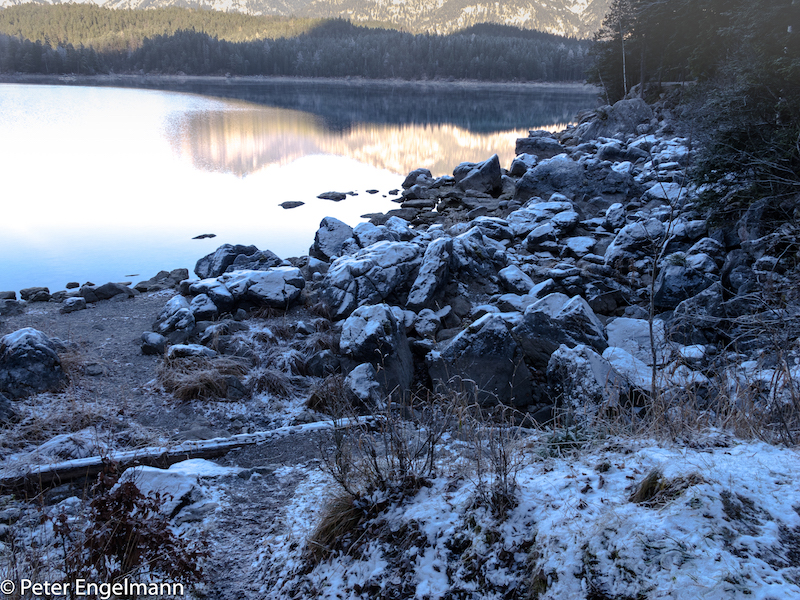Frost – Garmisch Partenkirchen, Germany, Early December 2016
December 2016 was a dry month in many parts of Germany except the North-East. There was also very little snow in many regions. However another weather phenomenon created fascinating sceneries: hoar frost. After some warmer periods there was ground frost and air frost in the early days of December. It was the right condition for hoar frost which is composed of tiny ice crystals. Hoar frost is formed by the same process like dew and when the temperatures of surfaces are below the freezing point (further information: met office). Hoar frost creates great motives for photography and film. The Garmisch-Partenkirchen valley is particularly interesting during such days. Its one of Germany’s most spectacular sceneries anyway with the highest mountain of Germany, the “Zugspitze” and a huge skiing area. The huge mountains are on the south-side of the valley. Consequently there are parts in the valley like the village Grainau which gets very little sunshine in December and January. In the shadow side of the valley on the north-side of the Zugspitze its cold and the hoar frost remains. On the other side of the valley it can be warm and sunny at the same time. Thus there are very different climate conditions in a small area. A special place is the Eibsee, 1000 metres above sea level. It’s surrounded by woods and in a wild alpine area. The Eibsee is the last stop of the famous cog railway in the valley. Its also the valley station of the cable car which brings visitors in a few minutes to the top of the mountain. There is a walkway around the lake leading to a fascinating landscape. There is also a little island in middle of the lake and a luxury hotel on one side. The shore of the lake is formed by huge rocks, which looks great with a thin layer of hoar frost. During winter the lake is often frozen. Due to the special conditions interesting patterns appear on the ice surface. 
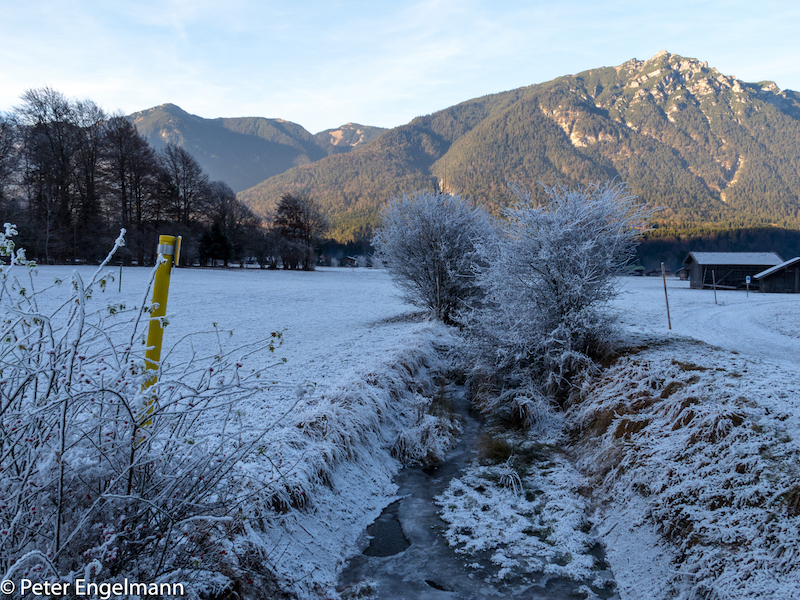 In winter and autumn there are often very different weather conditions in the alpine region and the region in the north of the mountains. In the valley of Garmisch-Partenkirchen it was a sunny day, but at the end of the valley there was a mist remaining for most of the day. Atmospheric inversion happens often when there is high pressure. This means there is a warm layer of air on top of the cold air in the valley. It can get really warm on the mountain tops. Sometimes you can see the mist then below, which is like being above the clouds. If atmospheric inversion lasts for a longer time it can create problems with air pollution near the ground because there is no circulation of air. Cold pockets of air can also last very long in some alpine valleys like the “Funtensee” in Bavaria, which is regularly mentioned in the weather news due to its extreme low temperatures.
In winter and autumn there are often very different weather conditions in the alpine region and the region in the north of the mountains. In the valley of Garmisch-Partenkirchen it was a sunny day, but at the end of the valley there was a mist remaining for most of the day. Atmospheric inversion happens often when there is high pressure. This means there is a warm layer of air on top of the cold air in the valley. It can get really warm on the mountain tops. Sometimes you can see the mist then below, which is like being above the clouds. If atmospheric inversion lasts for a longer time it can create problems with air pollution near the ground because there is no circulation of air. Cold pockets of air can also last very long in some alpine valleys like the “Funtensee” in Bavaria, which is regularly mentioned in the weather news due to its extreme low temperatures. 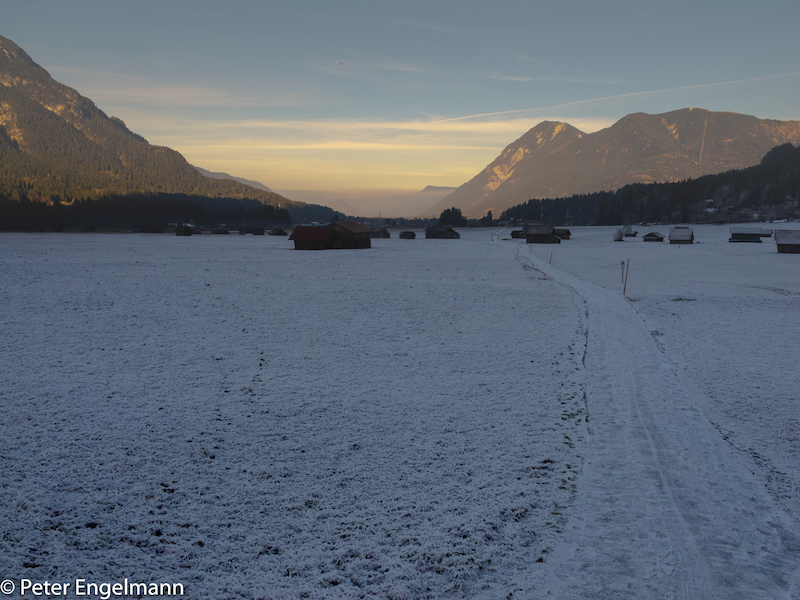
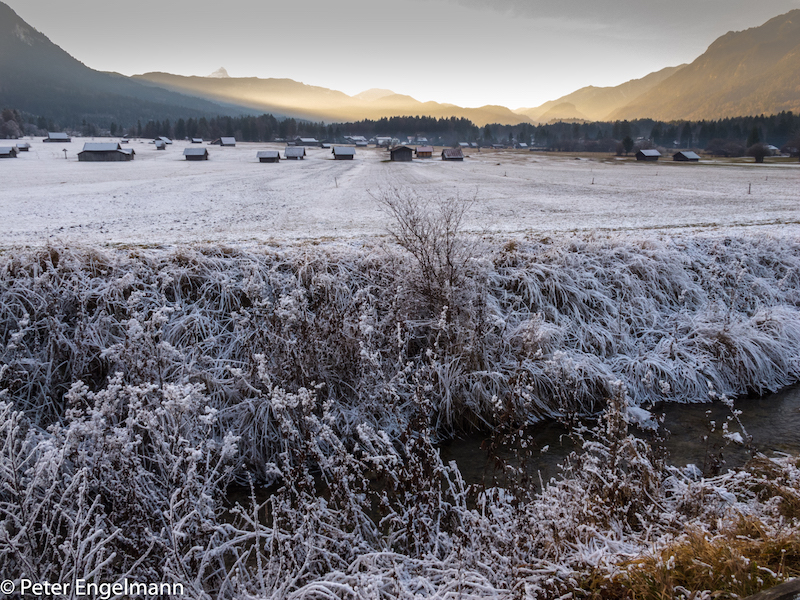
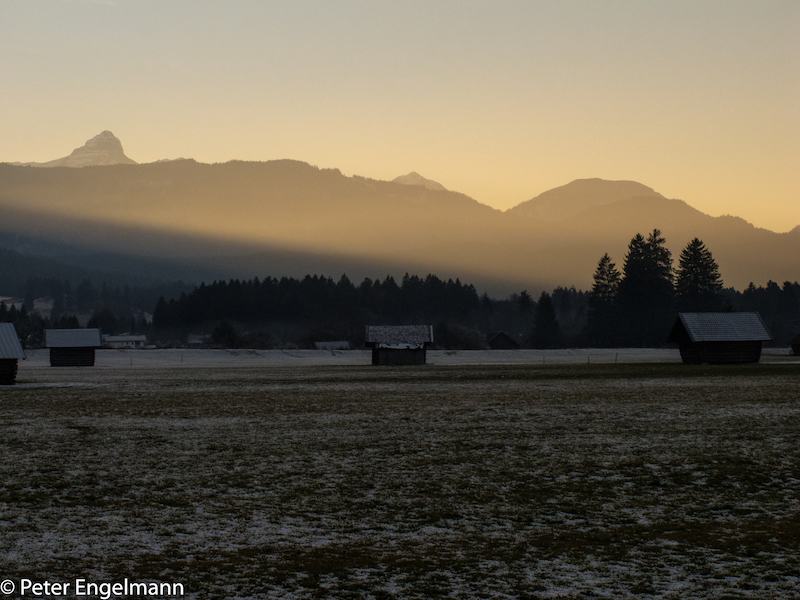
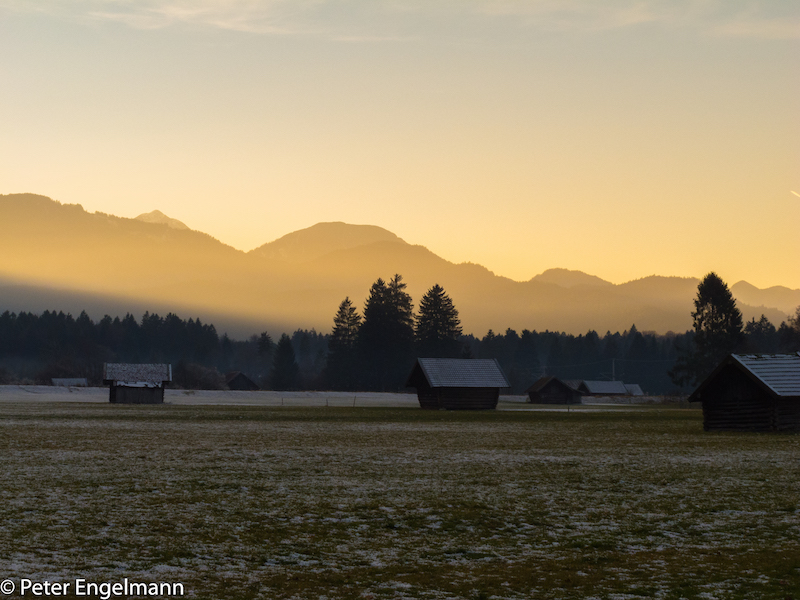 During December Garmisch-Partenkirchen prepares for the winter season. It can still be very warm when the “Föhn”, a warm wind created by rain-clouds on the south-side of the alps, lets temperatures rise. Climate-Change is also an issue with longer periods of warm weather and a melting glacier during summer. Nevertheless the Garmisch Partenkirchen valley is a very attractive destination for tourists in winter. Recently there had been huge investments. A new cable car is built which will bring more visitors to the top of Zugspitze. Usually there is a weather-change after New Year and when snow falls the valley turns into a fairy-tale landscape, which is another great scenery for photography. A great place is also the partnach gorge with bizarre ice sculptures.
During December Garmisch-Partenkirchen prepares for the winter season. It can still be very warm when the “Föhn”, a warm wind created by rain-clouds on the south-side of the alps, lets temperatures rise. Climate-Change is also an issue with longer periods of warm weather and a melting glacier during summer. Nevertheless the Garmisch Partenkirchen valley is a very attractive destination for tourists in winter. Recently there had been huge investments. A new cable car is built which will bring more visitors to the top of Zugspitze. Usually there is a weather-change after New Year and when snow falls the valley turns into a fairy-tale landscape, which is another great scenery for photography. A great place is also the partnach gorge with bizarre ice sculptures.
